I apologize, Central Europe: I clearly underestimated your entire region of the world, at least from a culinary perspective. I’m now guilty of walking into Austrian, Hungarian, and Czech(-oslovak?) restaurants with supremely low expectations, just trying to cross a few countries off my list. And thanks to Zlata Praha, I’ve now been pleasantly surprised by unexpectedly impressive meals from all three (or four?) nations.
Zlata Praha has graced Astoria since 1993, the same year in which Czechoslovakia dissolved into two countries. Interestingly, the restaurant still considers itself Czechoslovak, rather than branding itself as solely Czech or Slovak. When we sat down, I asked our waiter if he was Czech or Slovak, and he said that he was Slovak, but that it’s the same thing as being Czech. I then asked him what his Slovak grandmother would order if she came to the restaurant; the answer was ultimately wonderful, but gut-busting.
While we waited for our food, Zlata Praha’s pan-Czechoslovakian-ness got us thinking: why the hell did Czechoslovakia break up, anyway? It seemed to have almost nothing to do with ethnic tension: according to a 1992 poll commissioned by the Czechoslovak government, only 36% of Czechs and 37% of Slovaks actually wanted to break the country apart. The dissolution was a bloodless, calm split engineered by politicians, mostly due to concerns over economic and political asymmetry in the country—Slovakia has half as many citizens as the Czech Republic, and was substantially poorer than the Czech side in the early 1990s. Interesting.
So Czechs and Slovaks seem to have absolutely no problem with each other—at least in the United States—and nearly every NYC restaurant that serves Czech food claims to serve both “Czech and Slovak” dishes. (Milan’s, which seems to be NYC’s only Slovak-owned restaurant, serves “Slovak and Czech” dishes.) The owner of Zlata Praha is Czech and our waiter was Slovak, so we decided to embrace Czechoslovak unity by ordering national dishes from both countries.
For the Czech half of our meal, we ordered svickova (pronounced “sheeshkova”, I think… $10.95), a plate of marinated roast beef (sauerbraten) swimming in a massive pool of bizarrely delicious gravy, served with a side of bread dumplings and a dollop of cranberry sauce. I’m not usually a fan of meat-in-gravy dishes, but the sauce adorning the beef was surprisingly appealing: a gently sweetened blend of carrots, cream, pepper, onion, and thyme. The bread dumplings (extremely soft, moist bread, comparable to a less-chewy version of a steamed Chinese siopao) were clearly engineered exactly for the task of sopping up the tasty svickova juice. (Mmmmm, svickova juice.)
For our other dish, we took the advice of our friendly Slovak waiter, and ordered halusky ($9.95), the national dish of Slovakia. Halusky is Slovakia’s answer to mac-and-cheese topped with bacon, except that the dish contains spatzle (smallish dumplings) instead of macaroni, and the cheese sauce is made from a sheep cheese called bryndza. The bryndza reminded us of a cross between feta and parmesan—it has a hint of feta-esque sour sharpness, but it’s salty as all hell… and that’s a good thing, in my world. I absolutely loved the stuff, especially with the sprinkling of bacon; it was, however, supremely dense, and we struggled to keep our heads off the table after sharing our two entrees with each other.
Despite the gut-busting plate of halusky, we had a feeling that skipping dessert would be a bad, bad, dumb, bad idea. So we ordered a plate of Czech fruit dumplings (ovocne knedliky, $5) which were clearly an acquired taste. Each dumpling contained an entire pitted plum, and the doughy balls were topped with some sort of cream cheese relative, tons of melted butter, a dusting of powdered sugar, and more melted butter. I can’t really rip on Zlata Praha for this, but the cheese and butter were too much for us, so we just picked at the fruit, and left the rest uneaten. I’m sure that it’s the sort of thing that you can learn to love, but it was awfully hard to acquire a taste for anything so rich when you’ve just eaten a big, fat plate of halusky with bacon. Maybe ovocne knedliky is best appreciated after a light meal, and we should have had salads instead of halusky. Or not.
Zlata Praha
2848 31st Street, Astoria
Subway: (N, Q trains)


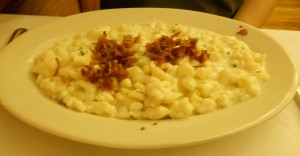
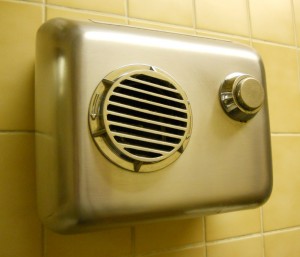
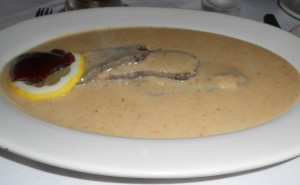
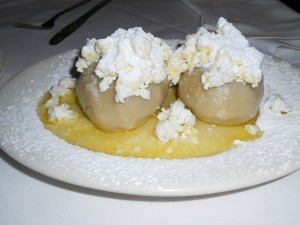
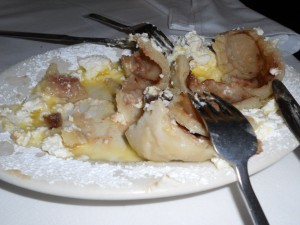







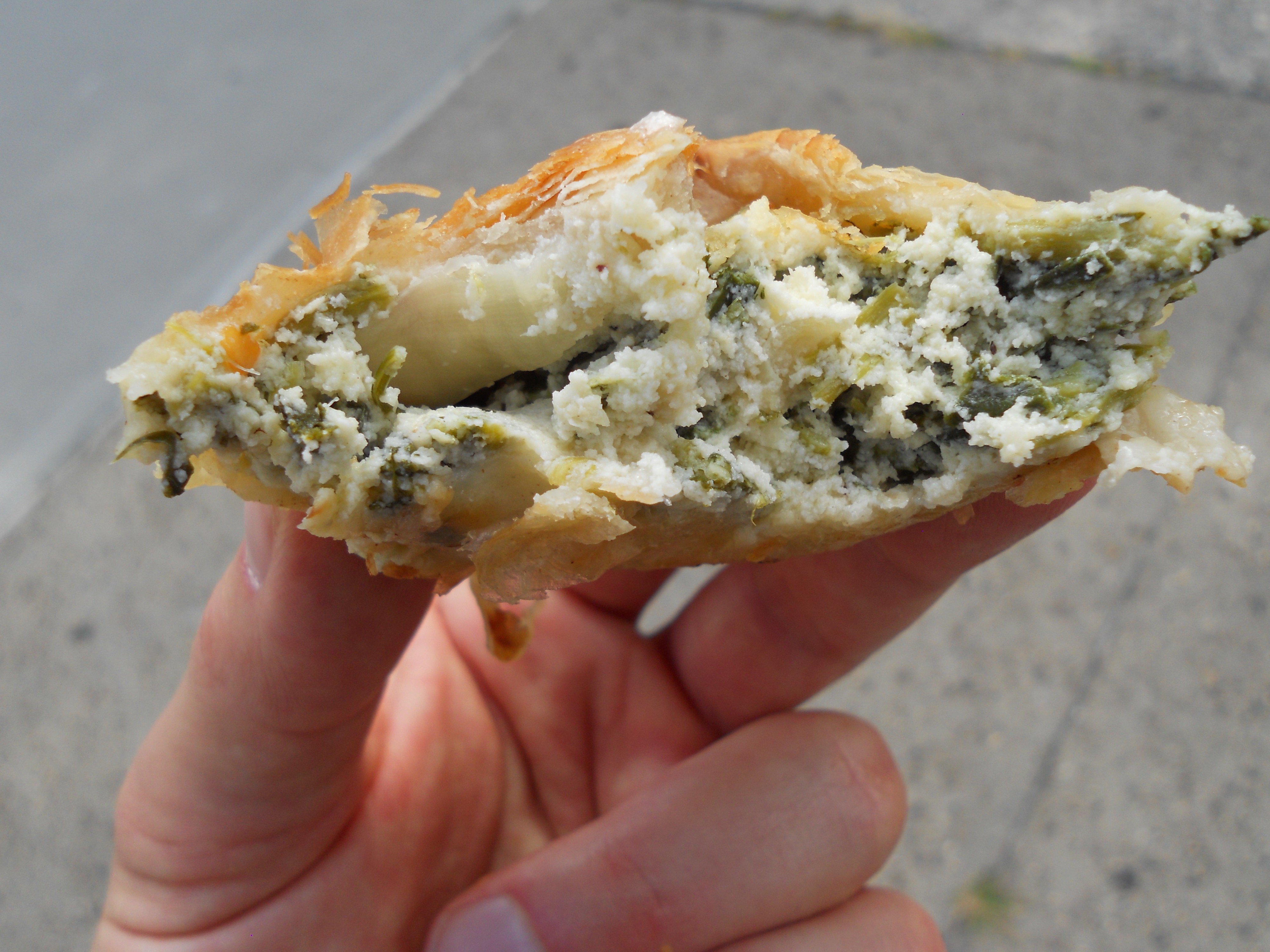
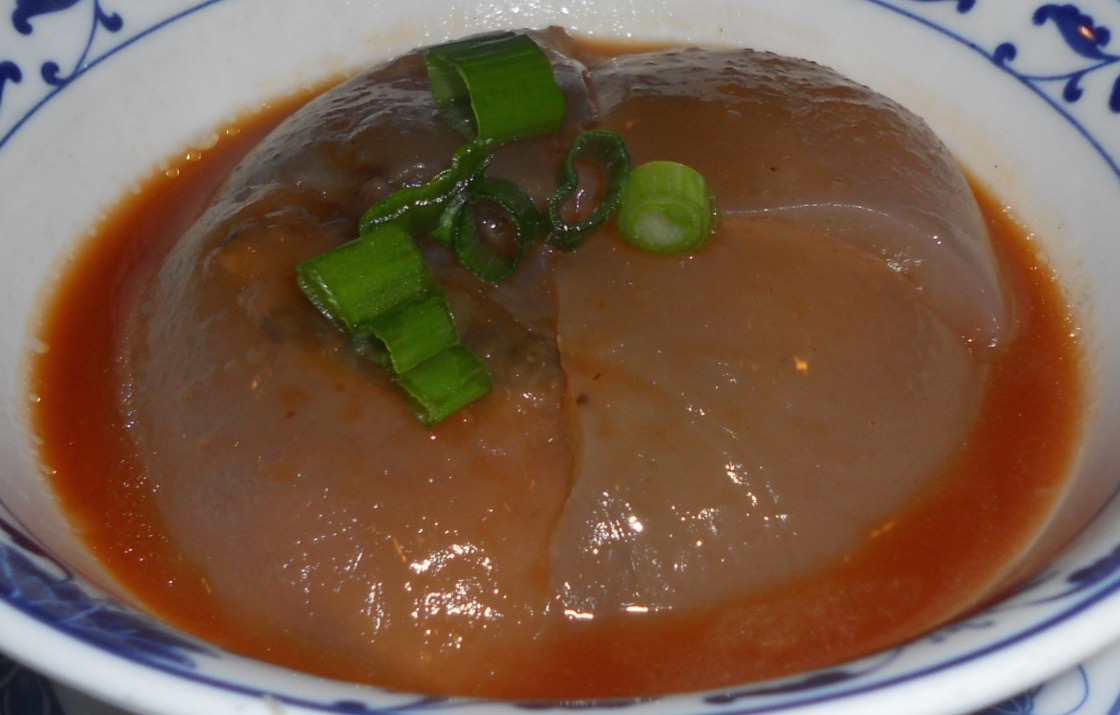
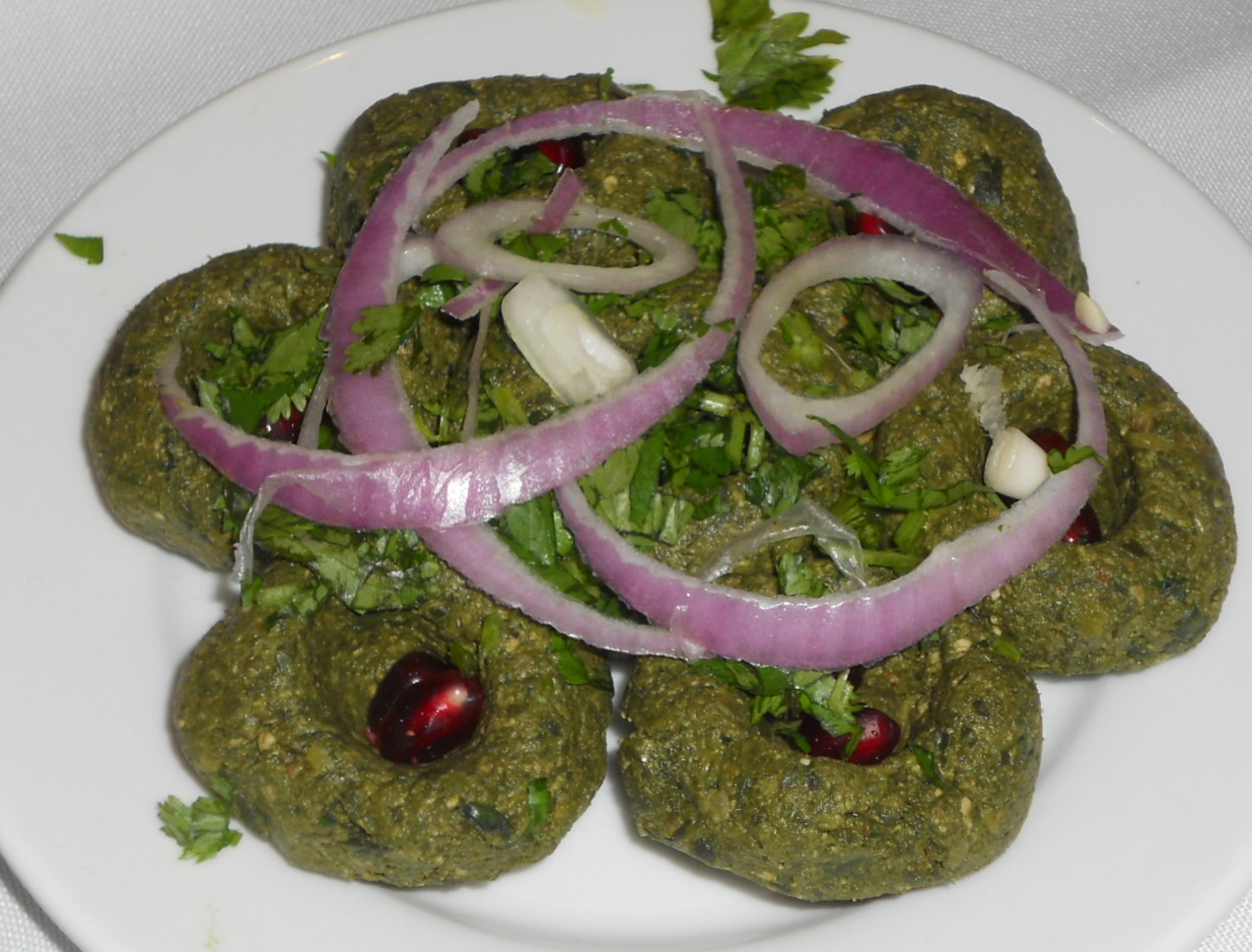
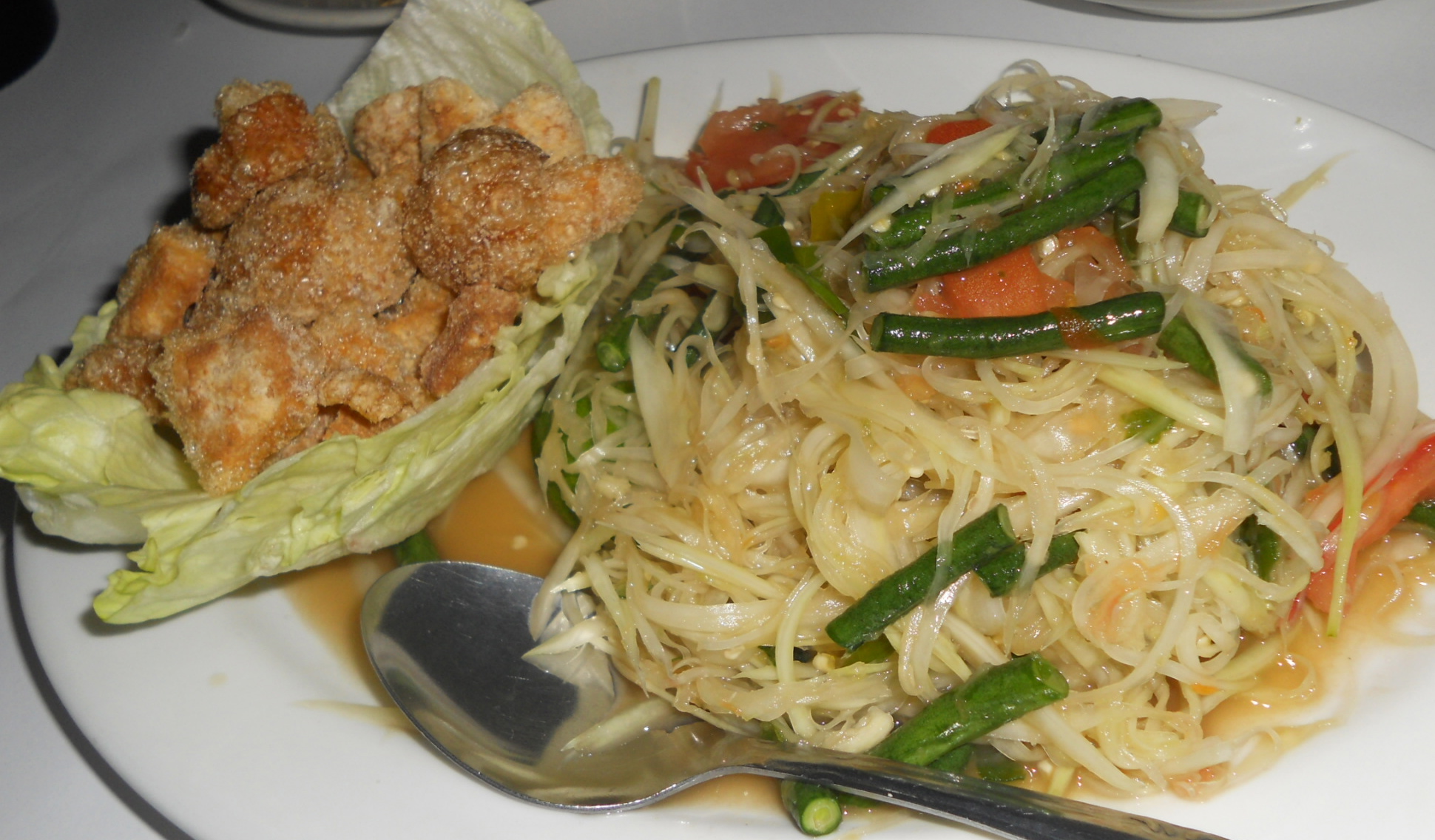
Glad you like Czech food. Zlata Praha isn’t the best example. My wife’s home cooking is, but Zlata Praha is just ok. Koliba in Astoria is OK too. Unfortunately there are not a lot of good Czech restaurants left in NYC. Czech out (:-)) Milan’s in Sunset Park Brooklyn (a bit more Slovak than Czech), and Hospoda on the Upper East Side. Cafe Prague in lower midtown is also ok.
Svickova is pronounced sveetch – ko – va
Thank you, Matthew! Milan’s is wonderful — haven’t been there in a long time, but I’m still a fan. I’d never even heard of Hospoda — I’ll have to Czech that place out. Thank you for the tips, and happy eating!